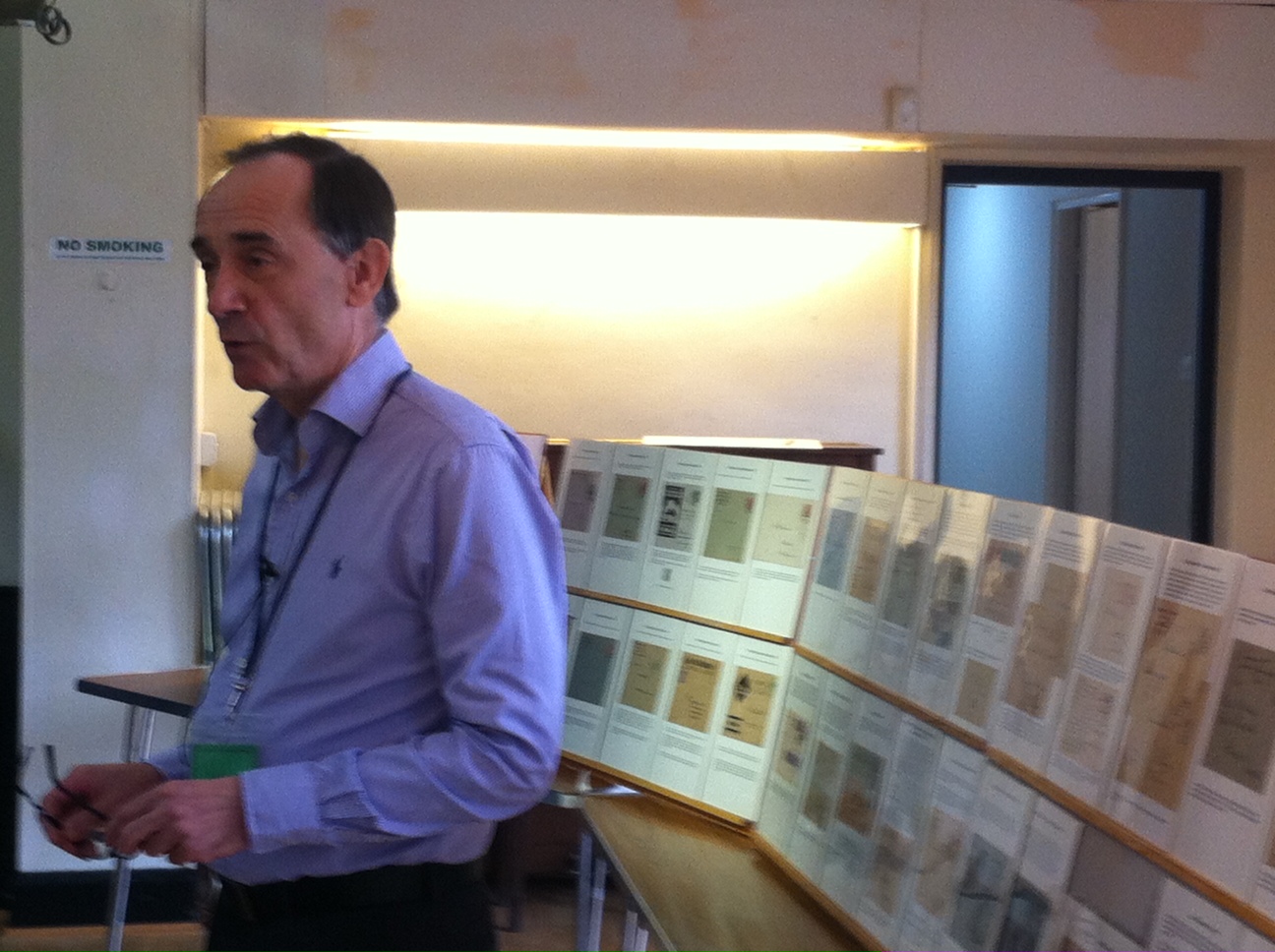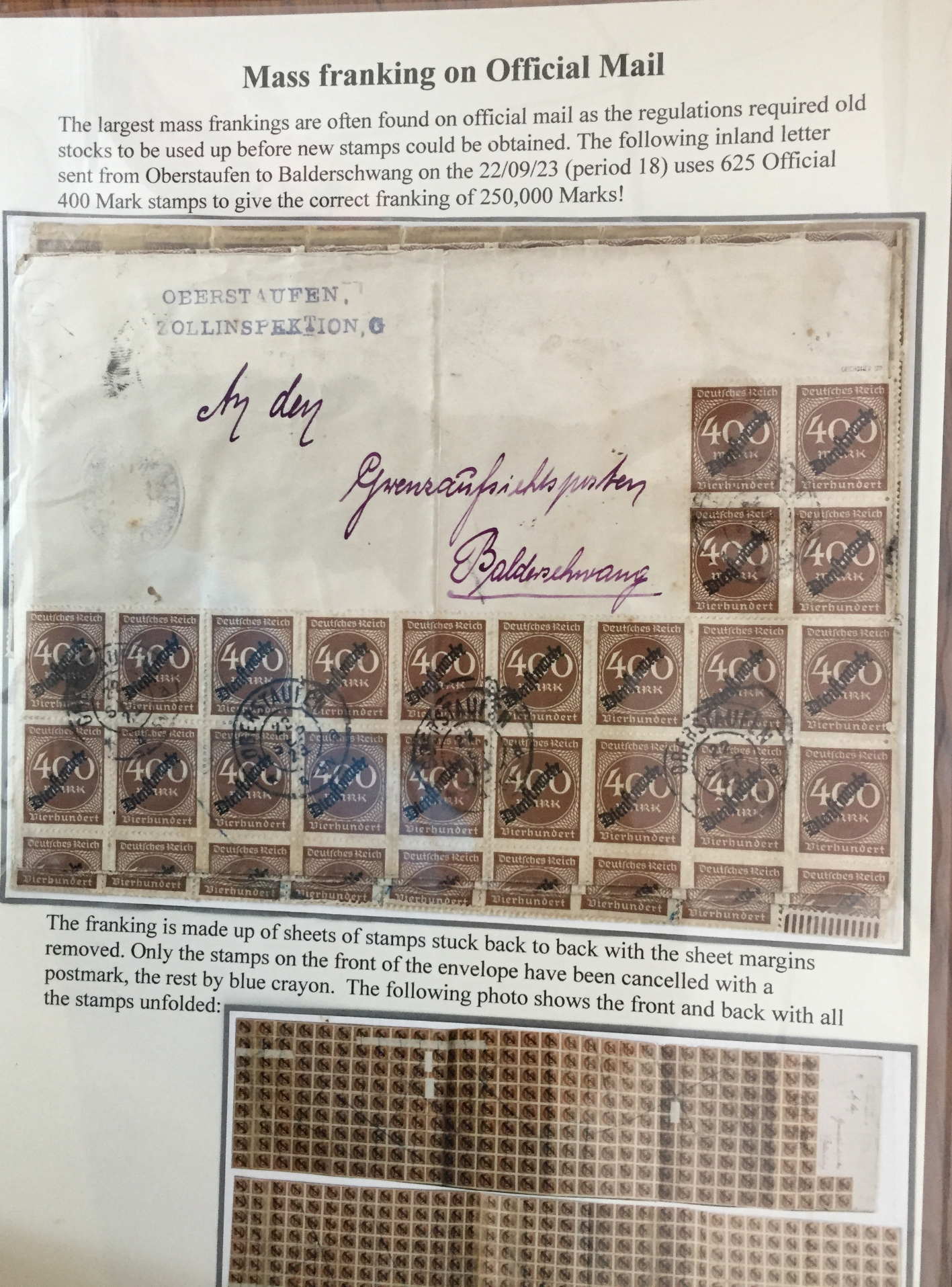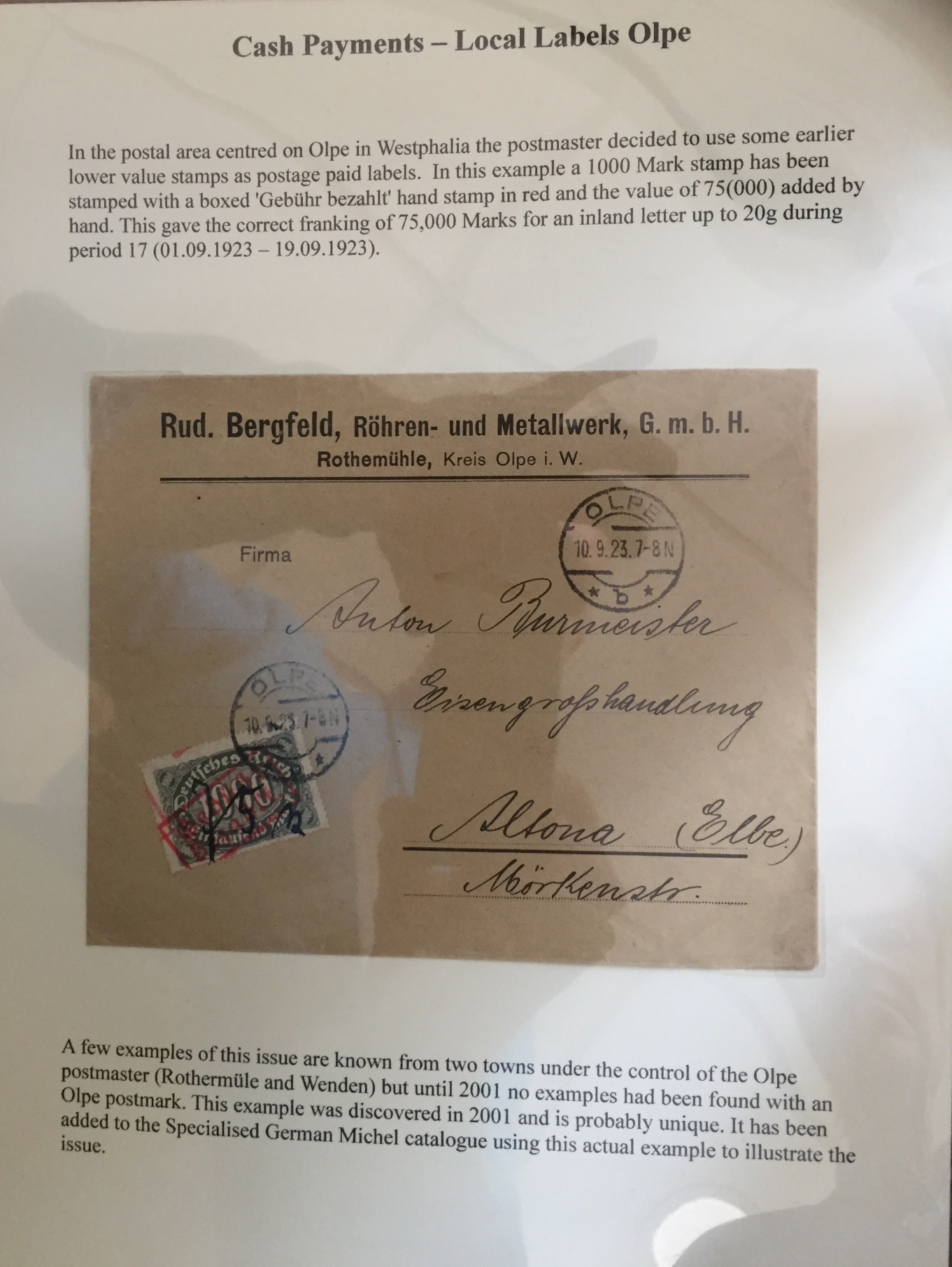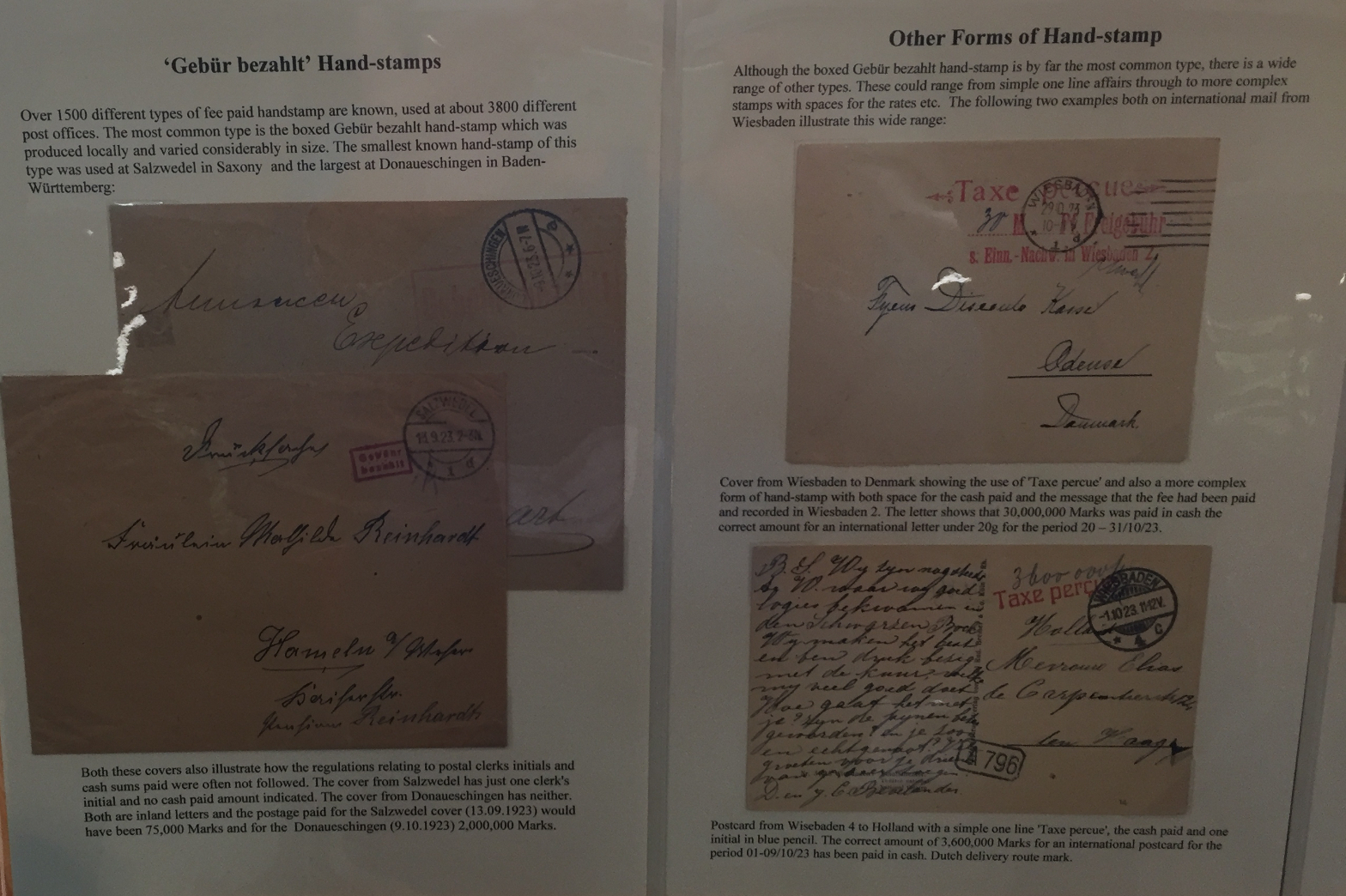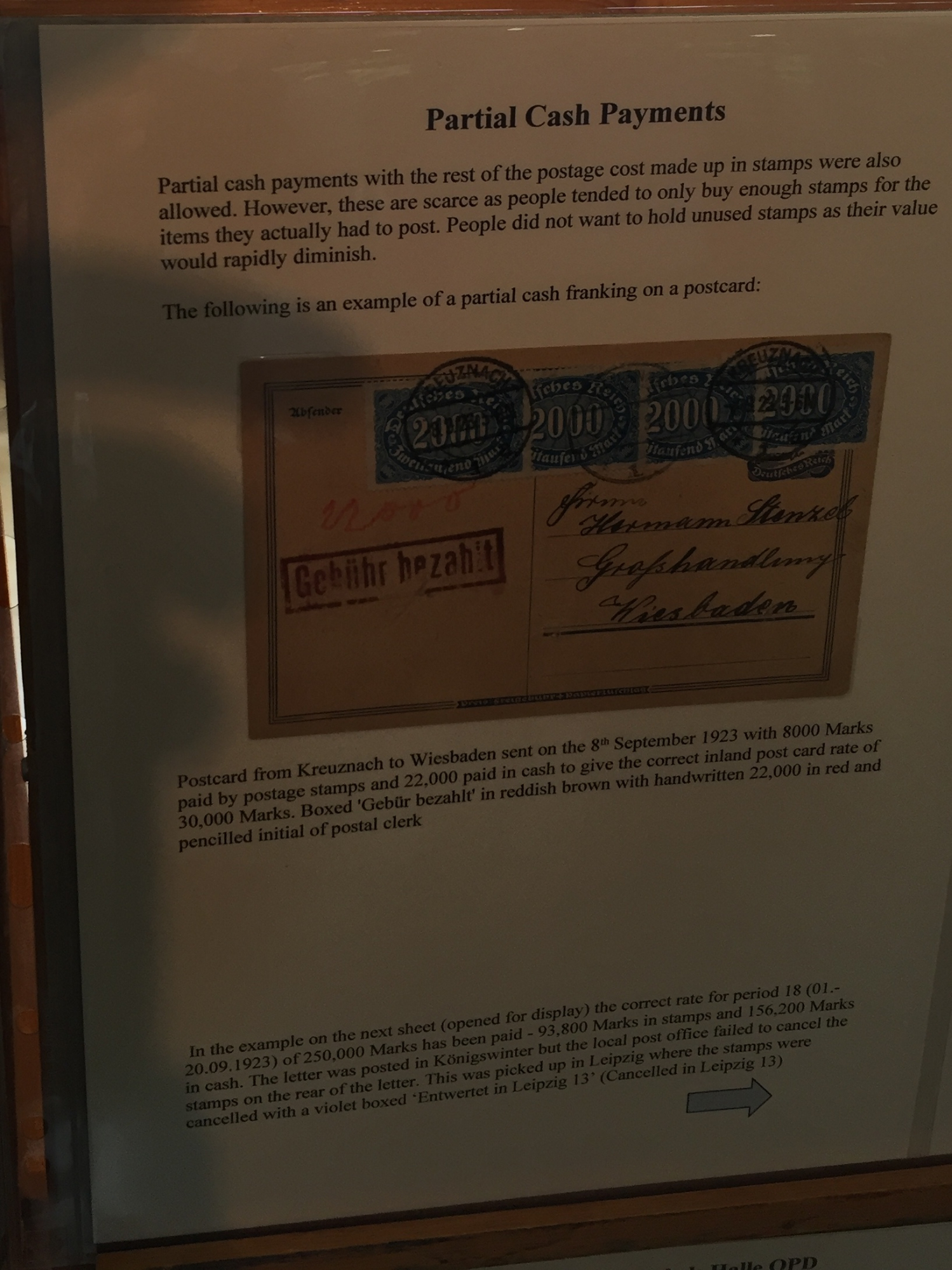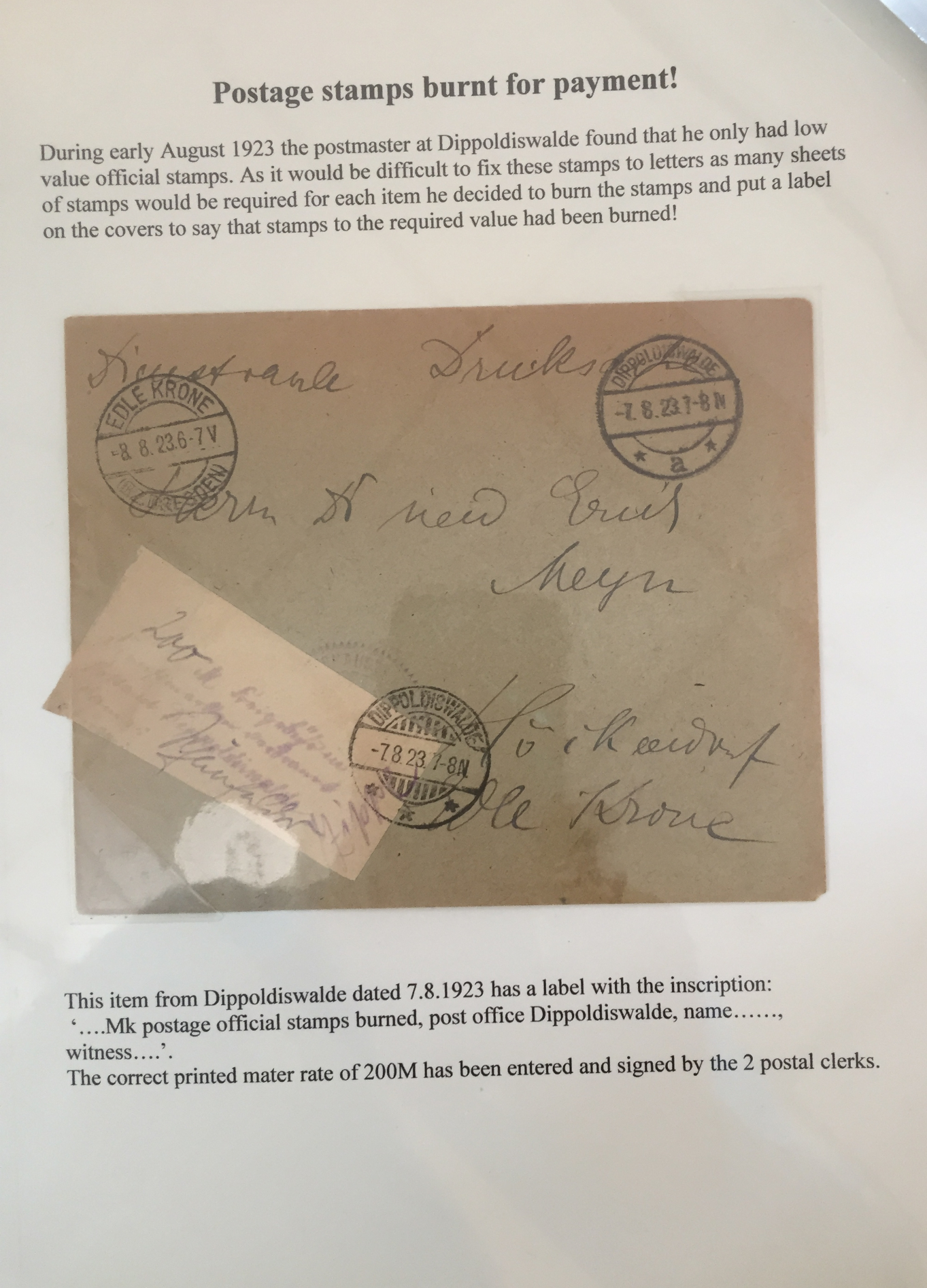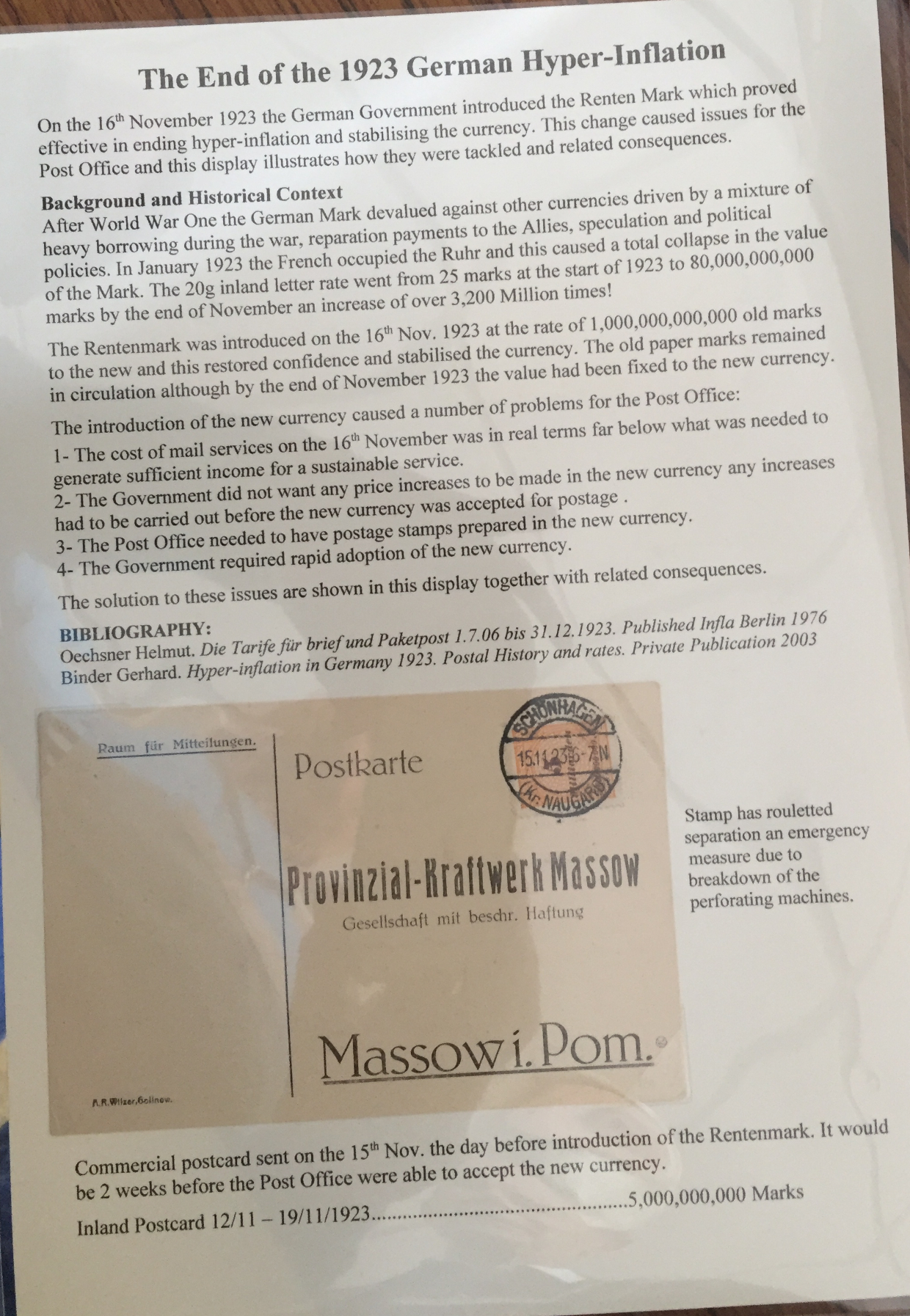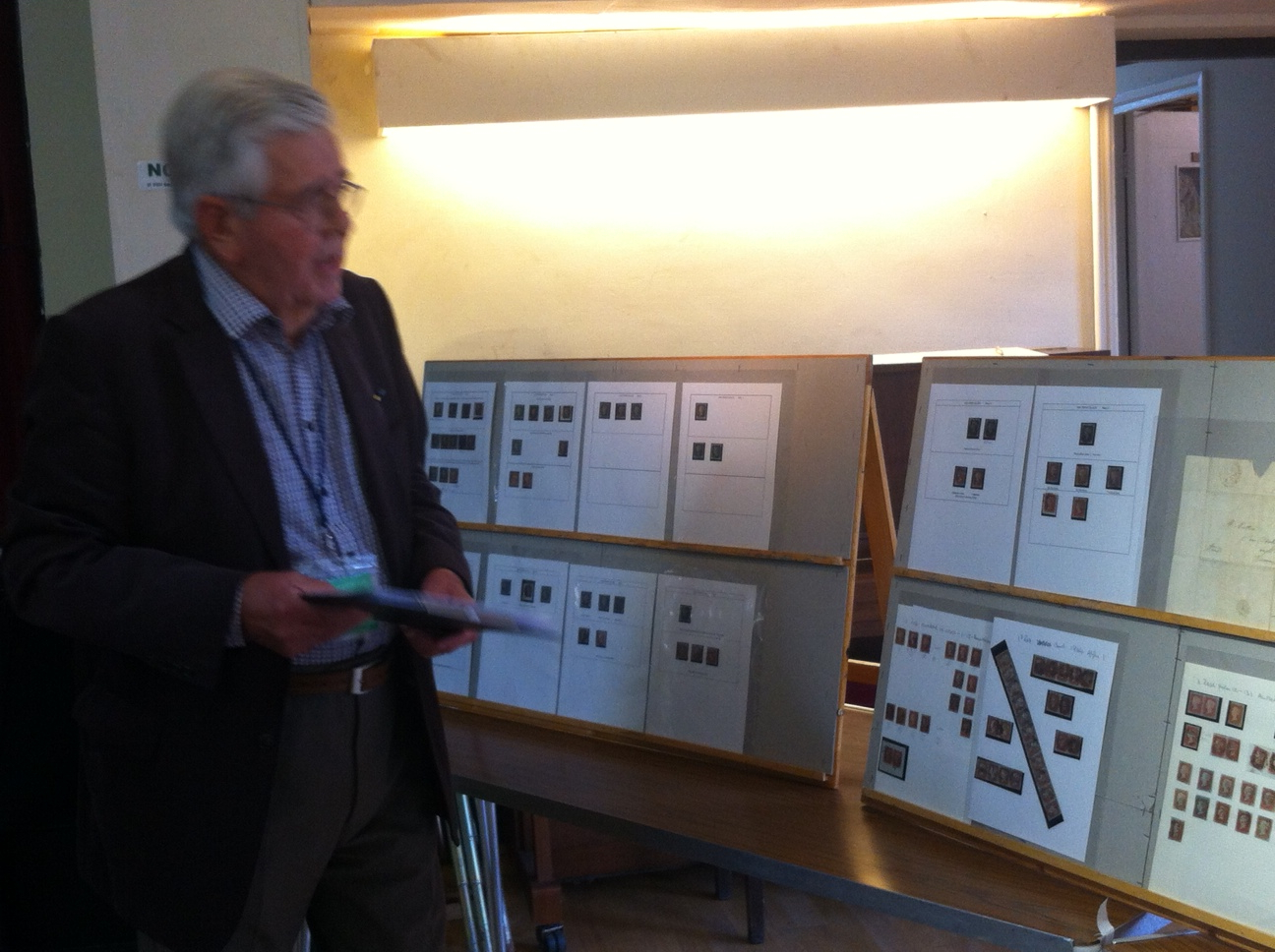This afternoon we were entertained by Epsom & Ewell Philatelic Society. Robert Mott (pictured above left) displayed the German inflation period of 1923, where there was an incredible 16 increases in postage rates. The cost went from 50 marks to 100,000 million marks in the one year! Robert showed us many covers, some of which had half postage stamps and half paid by cash, which had to be rubber stamped by the postal clerk to clarify that the cash had been paid. Others had overprinted stamps for the required rate. We saw makeshift labels made up by postal clerks that were stuck onto envelopes to denote that the postage had been paid by cash. One cover had 625 x 400 mark stamps folded and attached to it! A truly fascinating period put over with great aplomb by Robert. Several photos of Robert's display are above.In the second half Anthony McLenland (pictured above bottom right) displayed his collection of GB Queen Victoria stamps starting with the first ever stamp, the penny black. He explained the reasons why the penny red was introduced and the different types of penny reds. We were then introduced to the 2p blue and onto the rest of Queen Victoria stamps ending in the surface printed issues. The first surface-printed stamps were printed using handmade paper, which led to variations in the thickness of paper. During the period between 1855 and 1901, there were a number of design changes, as well as changes in colours and plate numbers, and a total of 10 watermarks were used. The four basic families of Victorian Era surface-printed stamps can be classified under, no corner letters, small white corner letters, large white corner letters, and large coloured corner letters. A confusing but fascinating period for study.
